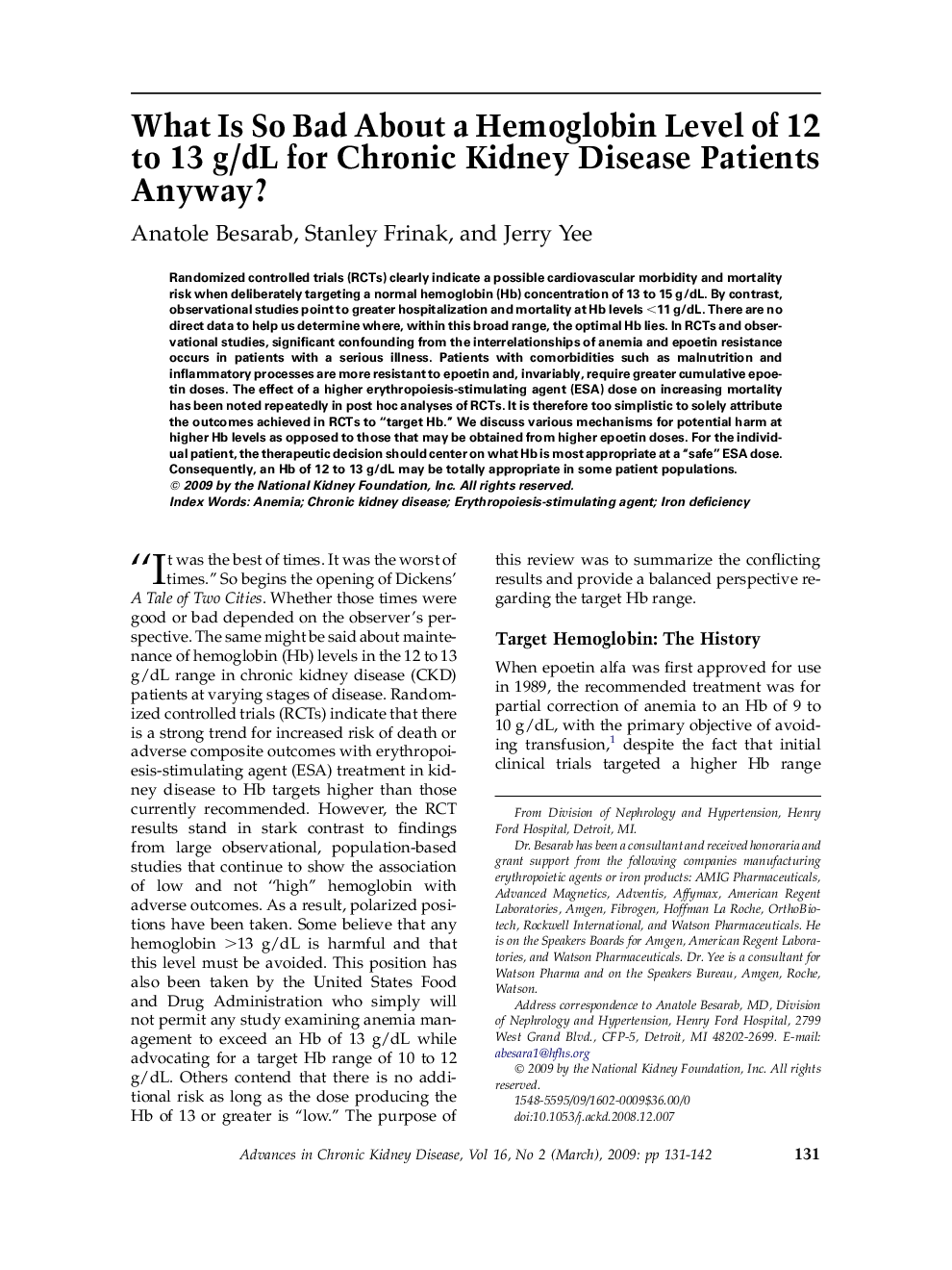| کد مقاله | کد نشریه | سال انتشار | مقاله انگلیسی | نسخه تمام متن |
|---|---|---|---|---|
| 3847252 | 1248371 | 2009 | 12 صفحه PDF | دانلود رایگان |
عنوان انگلیسی مقاله ISI
What Is So Bad About a Hemoglobin Level of 12 to 13 g/dL for Chronic Kidney Disease Patients Anyway?
دانلود مقاله + سفارش ترجمه
دانلود مقاله ISI انگلیسی
رایگان برای ایرانیان
کلمات کلیدی
موضوعات مرتبط
علوم پزشکی و سلامت
پزشکی و دندانپزشکی
بیماریهای کلیوی
پیش نمایش صفحه اول مقاله

چکیده انگلیسی
Randomized controlled trials (RCTs) clearly indicate a possible cardiovascular morbidity and mortality risk when deliberately targeting a normal hemoglobin (Hb) concentration of 13 to 15 g/dL. By contrast, observational studies point to greater hospitalization and mortality at Hb levels <11 g/dL. There are no direct data to help us determine where, within this broad range, the optimal Hb lies. In RCTs and observational studies, significant confounding from the interrelationships of anemia and epoetin resistance occurs in patients with a serious illness. Patients with comorbidities such as malnutrition and inflammatory processes are more resistant to epoetin and, invariably, require greater cumulative epoetin doses. The effect of a higher erythropoiesis-stimulating agent (ESA) dose on increasing mortality has been noted repeatedly in post hoc analyses of RCTs. It is therefore too simplistic to solely attribute the outcomes achieved in RCTs to “target Hb.” We discuss various mechanisms for potential harm at higher Hb levels as opposed to those that may be obtained from higher epoetin doses. For the individual patient, the therapeutic decision should center on what Hb is most appropriate at a “safe” ESA dose. Consequently, an Hb of 12 to 13 g/dL may be totally appropriate in some patient populations.
ناشر
Database: Elsevier - ScienceDirect (ساینس دایرکت)
Journal: Advances in Chronic Kidney Disease - Volume 16, Issue 2, March 2009, Pages 131-142
Journal: Advances in Chronic Kidney Disease - Volume 16, Issue 2, March 2009, Pages 131-142
نویسندگان
Anatole Besarab, Stanley Frinak, Jerry Yee,